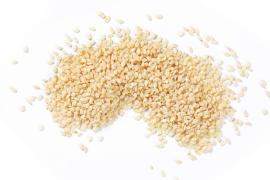A chronically tired Ethan struggles to reach the end of a long day as a summer camp counselor. Rising early in the morning to prod sleepy-head campers and vigilantly conduct morning swim tests at the pool, he later harnesses kids into safety gear and encourages them to be brave as he watches them jump from the power pole, then swing through the breeze as they take on their first zip line excursions. Add to that color wars, an emotionally distressed camper, team games, and crafts. Like Ethan, you may end your day by building a nice fire, fueling it with twigs and branches before the beginning of campfire stories and songs — and feeling thoroughly exhausted. If, like him, you fuel your body with a steady diet of foods and drinks high in sugar, salt, and caffeine, you are likely familiar with the feeling of fatigue, and you’re doing yourself (and your campers) a disservice.
Sodium
Sodium in the body releases bodily energy. It also maintains heart health and blood volume, which is a catalyst for a healthy blood pressure. As hormones balance sodium and fluid levels in your body, excess amounts of sodium can increase water, which increases blood, as it is mostly water. This causes high blood pressure, which is linked to many major health problems like heart attack and stroke (Center for Disease Control, 2012).
Most Americans consume too much sodium, 75 percent caused by indulging in restaurant food and processed foods. Shockingly, over 90 percent of four- to 18-year-olds eat too much sodium (Gunn & Owens, 2015).
Per the Center for Disease Control, over 40 percent of our sodium comes from these ten types of foods (Center for Disease Control, 2012):
- Breads and rolls
- Cured deli or packaged meats, such as ham or turkey
- Pizza
- Fresh and processed poultry
- Soups, especially canned
- Sandwiches, such as cheeseburgers
- Cheese
- Pasta dishes
- Meat — mixed dishes, such as meat loaf with tomato sauce
- Snacks, such as chips, pretzels, and popcorn
The recommended daily amount of sodium is 2300 milligrams daily, or approximately one teaspoon of table salt, so a good start to reducing your sodium is controlling your portions of the ten food types listed here.
Tip: Try to limit any of the preceding types of foods to once weekly. For example, while at camp, limit pizza to one meal a week.
Sugar
Sugar has been proven to cause changes in the brain’s limbic region, or reward center, causing “craving and withdrawal” just as any other addiction (University of California San Francisco, 2017). Almost one-third of our calories consumed originate from sugar, partially because food processors embellish our foods with 140 to 150 pounds of sugar per person annually (Teitlebaum, 2010). The American Heart Association (AHA) and the
World Health Organization have weighed in on the amount of sugar we should consume daily. The AHA’s limits are:
- Women — six teaspoons (25 grams)
- Men — nine teaspoons (38 grams)
- Children (depends on age) — three to six teaspoons (12 to 25 grams)
The World Health Organization suggests that a maximum of 10 percent of adult calories be from sugar, but 5 percent is better. However, Americans eat an estimated 19.5 teaspoons daily, or 66 pounds annually per person (University of California San Francisco, 2017). The result of excess sugar consumption can be daunting health problems, including, among others:
- Fatigue
- Digestive problems
- Sinusitis
- Immunosuppression
- High cholesterol
- Cancer
Some top sugar-laden foods to avoid are (Magee, 2009):
- Packaged fruits
- Snack cakes/pies
- Muffin mixes and prepared muffin
- Cereal bars
- Instant hot cereals
- Cold cereals
- Bottled spaghetti sauce
- Soft drinks
Tip: At breakfast, instead of muffins, opt for fresh fruit and low-sugar cold cereals.
Caffeine
Caffeine is a natural stimulant found in over 60 plants, such as tea, coffee, and cocoa beans. After being processed, coffee contains 100 milligrams per cup, tea holds 14 to 60 milligrams per cup, and chocolate has 45 milligrams in a one-and-a-half-ounce bar. Colas contain up to 45 milligrams in a 12-ounce drink. Caffeine is quickly absorbed into the brain. Among other negative responses, side effects include:
- Increased heart rate
- Anxiety
- Depression
- Insomnia
- Irritability
- Headaches
To reduce the probability of some of these symptoms, choose decaffeinated coffee, tea, and soft drinks, and/or limit your intake to these daily consumption guidelines, according to the New York Times Health Guide (2017):
- Coffee (brewed or drip): 200 to 300 milligrams or less, equals two to three eight-ounce cups
- Tea: five cups • Caffeinated soft drinks: five 12-ounce cans, at 34 milligrams each equals 170 milligrams total; however, consider the 225 milligrams of sodium, 700 calories, and 195 grams of sugar (My Fitness Pal, 2017)
- Candy, energy drinks, and gum: 40 to 100 milligrams per serving
Tip: If tea is served during mealtime, opt for decaffeinated tea at dinnertime to help avoid sleep disturbances.
Carbonated Drinks
Carbonated drinks are a health hazard. Depending on the brand, a 12-ounce cola contains approximately 60 grams of caffeine, 45 milligrams of sugar, and 140 calories. There is no health benefit to drinking a carbonated beverage, but there are plenty of destructive effects, including:
- Weight gain
- Diabetes
- Bone loss and osteoporosis
- Tooth decay
- Kidney and liver damage
- Heartburn
- Dehydration
The US leads the world in consumption of soft drinks, and their popularity is based on habit, convenience, taste, and thirst. Drinking a soda when thirsty is detrimental to the hydration process, because your saliva levels are low when thirsty or dehydrated. Saliva helps neutralize acids (of which soda contains large amounts) and clean your teeth (eMedExpert, 2016).
Tip: Just say no to soft drinks. Choose water, milk, tea, or 100-percent fruit juice instead.
Teamwork
How do you fuel a diet to support your health in the throes of summer camp? Teamwork and good decisions. You know a diet well balanced with vegetables, fruits, grains, and proteins is the best way to ensure good energy, good sleep, and longterm good health. Hold yourselves and each other accountable for making healthy food and drink choices and being strong nutritional role models for your campers. You are all in this together.
References
Center for Disease Control. (2012, February). Where’s the Sodium? Retrieved from https://www.cdc.gov/ VitalSigns/Sodium/index.html
eMedExpert. (2016). 8 reasons why people drink soda & 16 reasons to give up soda drinking. Retrieved from emedexpert.com/tips/soft-drinks.shtml
Gunn, J. & Owens, L. (2015, March 30). How to slash sodium from your diet. Livestrong.com. Retrieved from livestrong.com/blog/slash-sodium-diet
Magee, E. (2009). Sugar shockers: Foods surprisingly high in sugar. WebMD. Retrieved from webmd .com/food-recipes/features/sugar-shockers-foodssurprisingly-high-in-sugar#4
McIntosh, J. (2016, October 4) Why is drinking water important? Medical News Today. Retrieved from medicalnewstoday.com/articles/290814.php
My Fitness Pal. (2017). Calories in Coca-Cola 12oz canned regular Coke. Retrieved from myfitnesspal .com/food/calories/coca-cola-12oz-canned-regularcoke-211966712
New York Times. (2017) Caffeine in the diet. Retrieved from nytimes.com/health/guides/nutrition/ caffeine-in-the-diet/overview.html
Teitelbaum, J. & Fiedler, C. (2010). Beat Sugar Addiction Now! Beverly, MA: Fair Winds Press.
University of California San Francisco. (2017). How much is too much? The growing concern over too much added sugar in our diets. SugarScience. Retrieved from sugarscience.org/the-growingconcern-of-overconsumption/#.WKMTo_krJPY
Kimberly Whiteside Truitt, CFM, has been food service director for Camp Gilmont and Camp Zephyr, and served as a member of Camping Magazine’s Editorial Advisory Committee for six years. Kimberly is married to Thomas and mom to Harrison and Benjamin.



